Jira Align is Atlassian's enterprise solution for aligning company-wide strategy with agile execution. Designed primarily for large organizations practicing SAFe, LeSS, or other scaled agile frameworks, Jira Align connects strategic initiatives to team-level work tracked in Jira Software.
While it's a powerful platform for managing extreme complexity at scale, Jira Align is best suited for enterprises with mature agile practices that have to enforce robust reporting, compliance, and traceability.
Before you decide to pick Jira Align as your preferred OKR tool, you should consider our list of Jira Align alternatives as they could be a better fit for your needs.
Why consider Jira Align alternatives?
Jira Align is a powerful tool for large enterprises as it can handle very granular control of planning and execution. But, this comes at a cost – the platform has many moving parts and requires a significant investment in time and resources to set up and maintain. This is also reflected in the platform's pricing, which is far greater than other alternatives.
If you're looking for a simpler platform that allows you to track OKRs and align your team without the overhead of Jira Align, you might want to consider other alternatives that can offer:
- Faster time-to-value: Jira Align's complexity can make onboarding and implementation long and resource-heavy.
- Simpler user experience: The platform isn't easily accessible to executives and everyday contributors.
- Lower cost of ownership: With a high per-user cost and mandatory implementation services, Jira Align can be expensive for many organizations.
- More flexible OKR support: While Jira Align can model OKRs, it's not a dedicated OKR platform and lacks out-of-the-box goal-tracking simplicity.
The top 6 alternatives to Jira Align
1. Tability
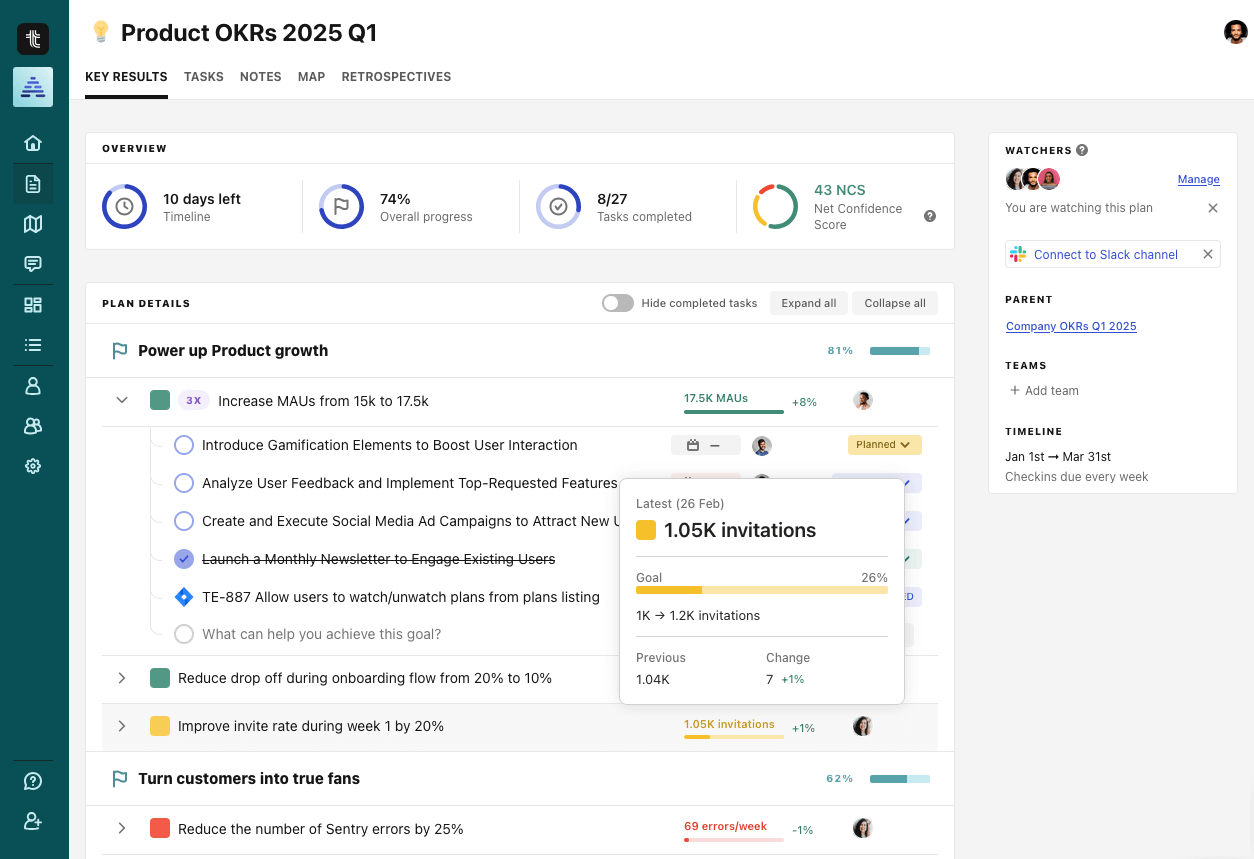
Modern OKR software built for accountability and transparency – the best alternative to Jira Align.
Tability is the best OKR platform for teams that are looking for a solution that combines ease of use, powerful reporting, and competitive pricing.
Unlike traditional OKR platforms that were built around rigid hierarchies, Tability is carefully designed to meet the requirements of modern, agile teams that need to quickly identify risks and opportunities without incurring a massive reporting overhead.
With its AI-driven recommendations, intuitive interface, and deep integrations, Tability is the best OKR software for results-driven teams that want to stay on top of their objectives effortlessly.
Tability feature highlights
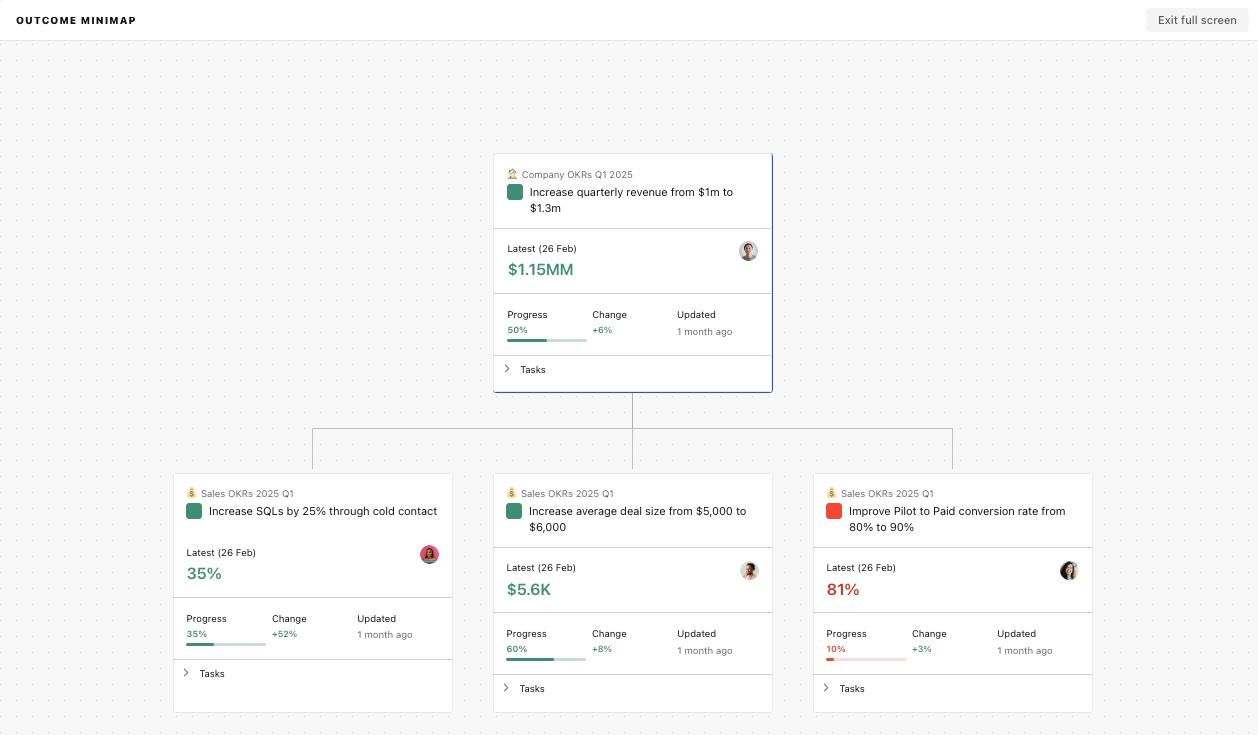
Tability goes beyond just tracking OKRs—it actively helps teams achieve them. By combining automation, smart insights, and a frictionless user experience, Tability ensures that teams can focus on what matters most: execution. Whether you're a startup, a growing business, or an enterprise, Tability provides the agility and intelligence needed to drive meaningful progress.
- Enforced accountability: Keep everyone on track with check-in reminders and transparent progress updates.
- Automated reporting & dashboards: Get real-time visibility with automated notifications and 10+ built-in dashboards.
- AI-powered insights: Receive proactive recommendations to stay on track.
- Seamless check-ins: Effortless updates with minimal disruption to workflows.
- Align and cascade OKRs: Adapt OKRs to fit any team, department, or workflow – link OKRs across teams to capture dependencies.
- Deep integrations & public API: Connect with your existing tools to ensure smooth collaboration and complete transparency.
- Modern UI: Tability embraces modern design principles to make goal tracking feel effortless.
- OKR + initiatives: Track initiatives alongside your OKRs to ensure alignment and accountability.
If you're looking for a tool that elevates the sense of urgency, then Tability will be the best choice for you. The platform balances the need for transparency and accountability without sacrificing the agility that modern teams need.
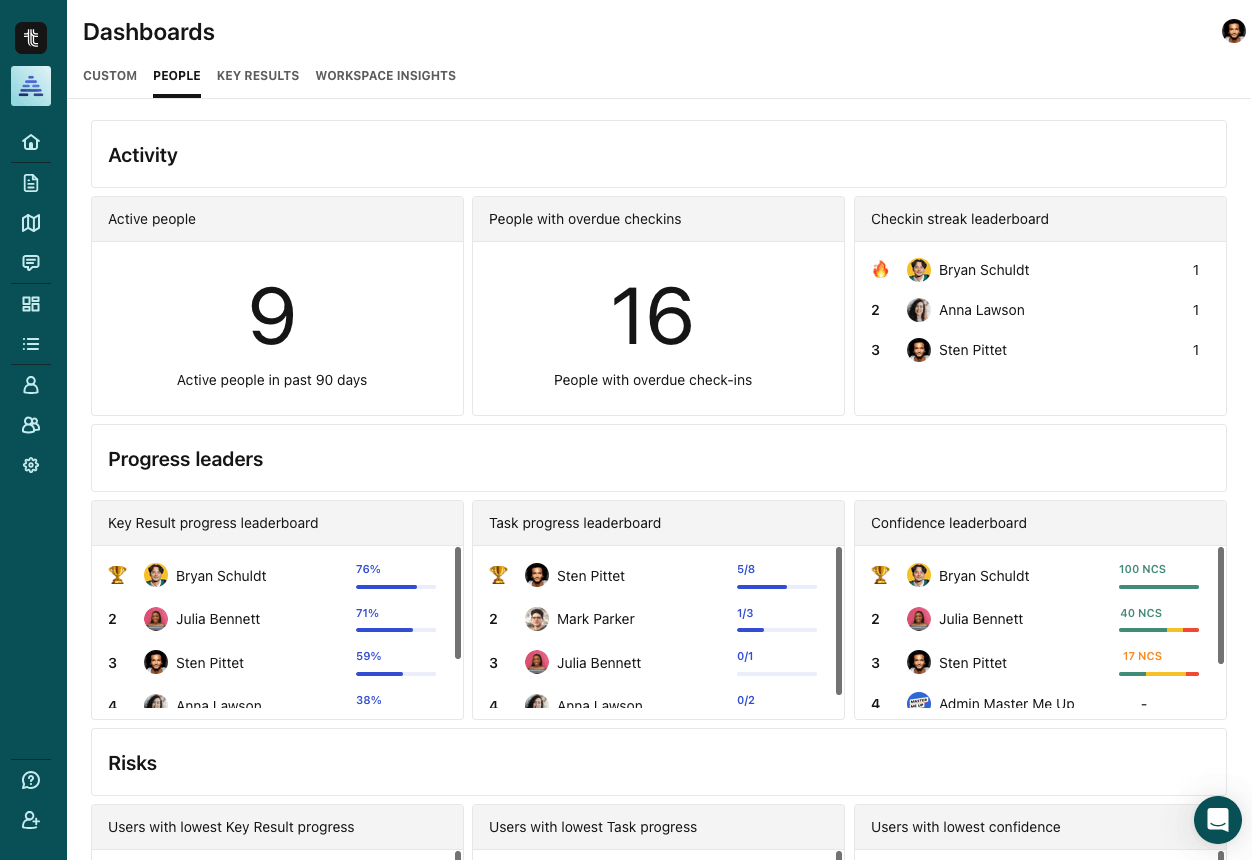
Tability integrations
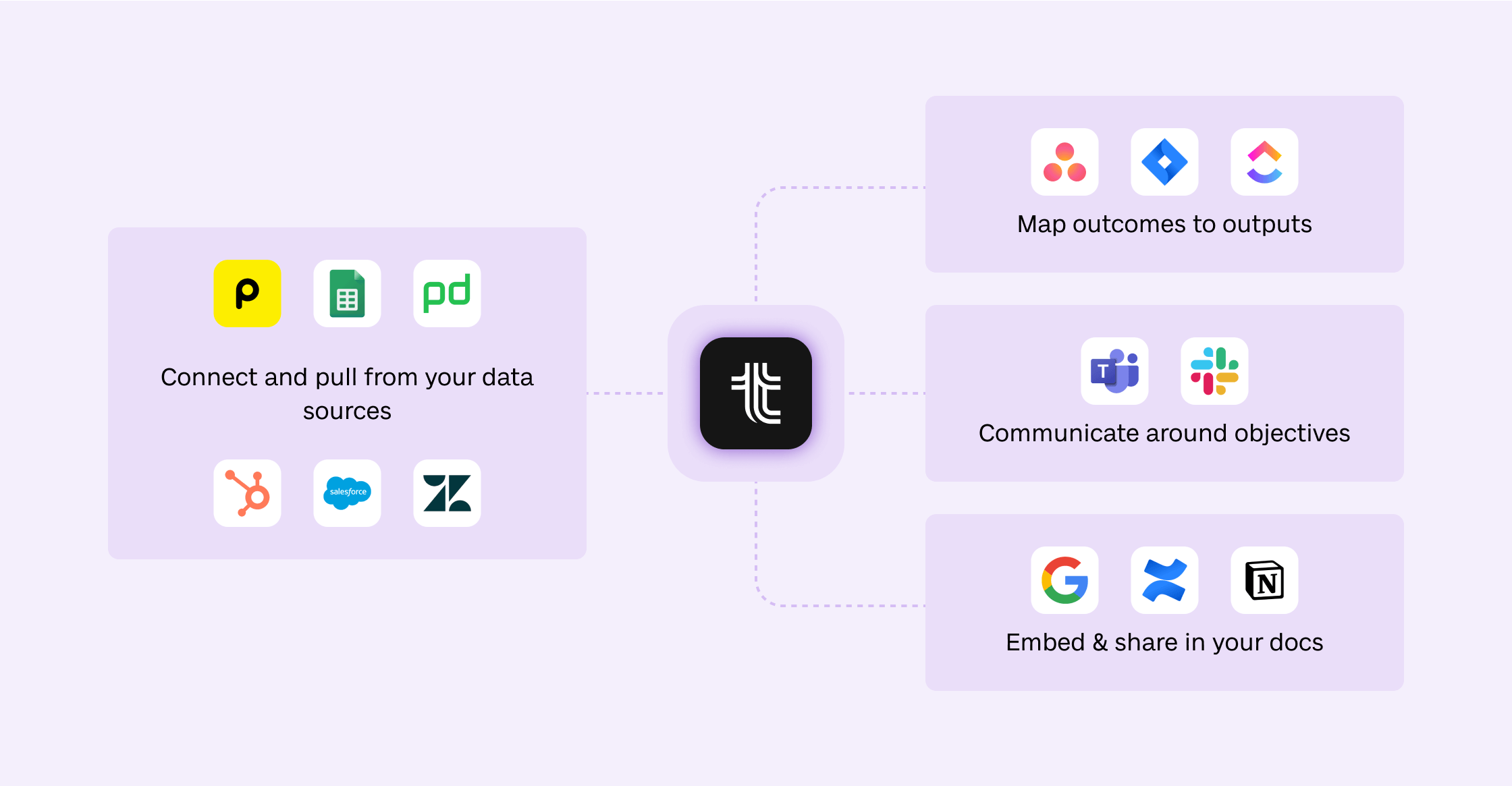
Tability integrates seamlessly with leading productivity and collaboration tools:
- Slack & Microsoft Teams: Get real-time goal updates directly in your workspace.
- Jira, ClickUp, Linear & Asana: Sync projects with strategic goals.
- Salesforce, HubSpot, PowerBI, Google Sheets & 10+ more tools: Use data connectors to sync KR progress from your existing tools.
- Zapier: Connect to thousands of apps for automated workflows.
- Notion & Confluence: Keep OKRs visible within your knowledge bases.
- Public API: Build your own integrations with Tability.
Tability pros and cons
| ☺️ Pros | 😓 Cons |
|---|---|
|
|
Tability review
G2 score: 4.7/5 (based on 131 reviews)
Tability pricing
Tability offers transparent, flexible pricing that scales with your team's needs. The free read-only licenses included in the Premium plan make it easy to create a culture of transparency by letting everyone access the OKRs instead of restricting visibility to execs and managers.
- Tability Basic: $6/user/month – everything you need to start your OKR journey.
- Tability Premium: $10 per user/month – unlocking alignment maps, AI insights, automation and advanced reporting.
- Enterprise plans: Custom pricing for large organizations needing tailored support and onboarding.
- Annual Discounts: Teams choosing yearly billing enjoy up to 20% off.
- Free read-only users: Tability offers 2 read-only licenses for each Premium license purchased.
Try Tability now | Book a demo of Tability
2. WorkBoard
Enterprise-grade OKR and performance management
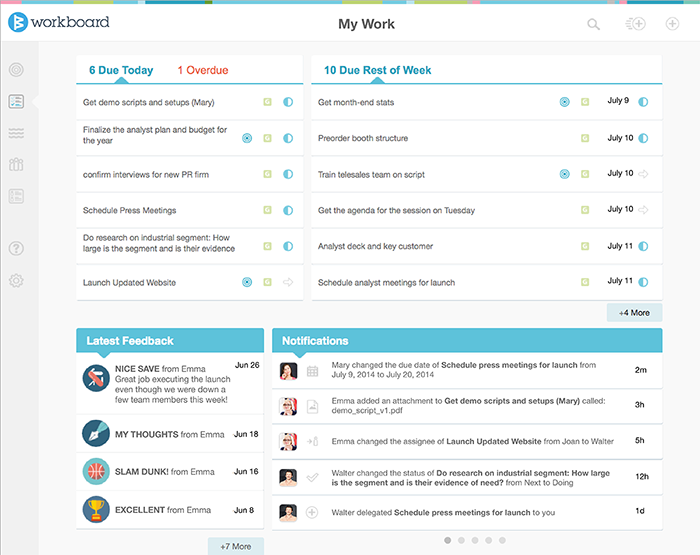
WorkBoard is an enterprise OKR platform designed for organizations that require structured goal-setting, performance tracking, and executive-level reporting. It provides a comprehensive suite of tools aimed at aligning strategic objectives across large teams while integrating deeply with business workflows.
With strong analytics and reporting capabilities, WorkBoard is a great fit for businesses that need detailed goal-tracking at scale.
WorkBoard feature highlights
- Enterprise-scale OKR management: Set, align, and manage OKRs across large teams.
- Executive-level dashboards: Get real-time visibility into goal progress and strategic alignment.
- Performance analytics: Measure and analyze goal completion rates, trends, and impact.
- Approval workflows: Implement structured goal approval and review processes.
- Strategic alignment tools: Ensure teams are working toward broader business objectives.
WorkBoard pros and cons
| ☺️ Pros | 😓 Cons |
|---|---|
|
|
WorkBoard pricing
WorkBoard offers enterprise-level pricing based on company size and feature requirements:
- Custom pricing: No publicly available pricing—cost varies based on business needs.
- Annual contracts required: No month-to-month plans, as pricing is tailored for enterprises.
3. Perdoo
A simple OKR software for teams looking to improve goal tracking

Perdoo is an OKR platform designed to help organizations define, track, and execute their strategic objectives. It provides a structured framework that enables teams to align their work with company goals and measure success through key results.
With its straightforward approach, Perdoo is well-suited for businesses looking for a simple OKR tool without unnecessary complexity.
Perdoo feature highlights
- OKR tracking: Set and update objectives with measurable key results.
- KPI management: Track key performance indicators alongside objectives.
- Progress updates: Get insights into goal progression and alignment.
- Check-ins & reminders: Keep teams accountable with scheduled check-ins.
Perdoo pros and cons
| ☺️ Pros | 😓 Cons |
|---|---|
|
|
Perdoo pricing
Perdoo offers a pricing model designed for teams of different sizes, but pricing tiers may vary based on feature needs:
- Free Plan: Suitable for small teams, but with limited functionality.
- Premium Plan: $7.20/user/month – offering performance and SSO but no Jira, Asana, or Power BI integration.
- Supreme Plan: $8.80/user/month – advanced reporting, custom dashboards and integrations.
- Paid plans require a minimum of 10 users.
4. WorkBoard
Enterprise-grade OKR and performance management

WorkBoard is an enterprise OKR platform designed for organizations that require structured goal-setting, performance tracking, and executive-level reporting. It provides a comprehensive suite of tools aimed at aligning strategic objectives across large teams while integrating deeply with business workflows.
With strong analytics and reporting capabilities, WorkBoard is a great fit for businesses that need detailed goal-tracking at scale.
WorkBoard feature highlights
- Enterprise-scale OKR management: Set, align, and manage OKRs across large teams.
- Executive-level dashboards: Get real-time visibility into goal progress and strategic alignment.
- Performance analytics: Measure and analyze goal completion rates, trends, and impact.
- Approval workflows: Implement structured goal approval and review processes.
- Strategic alignment tools: Ensure teams are working toward broader business objectives.
WorkBoard pros and cons
| ☺️ Pros | 😓 Cons |
|---|---|
|
|
WorkBoard pricing
WorkBoard offers enterprise-level pricing based on company size and feature requirements:
- Custom pricing: No publicly available pricing—cost varies based on business needs.
- Annual contracts required: No month-to-month plans, as pricing is tailored for enterprises.
5. Profit.co
A comprehensive OKR platform with extensive features
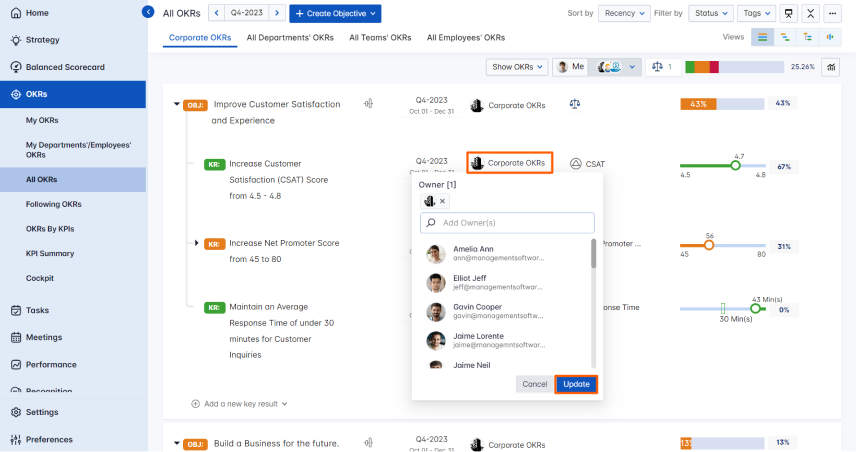
Profit.co is a feature-rich OKR platform designed for businesses that require a structured and disciplined approach to goal-setting. With its extensive capabilities, Profit.co offers a robust framework for tracking objectives, managing performance reviews, and aligning team efforts.
The platform provides a deep set of tools for enterprises looking for a detailed and process-oriented OKR solution.
Profit.co feature highlights
- OKR tracking & management: Define objectives, set key results, and align company-wide goals.
- Performance reviews: Combine OKRs with employee appraisals for a structured evaluation process.
- Task & initiative tracking: Break down objectives into actionable initiatives.
- Approval workflows: Implement structured approval processes for goal setting and execution.
- Custom dashboards & reports: Get detailed insights into goal progress and performance.
Profit.co pros and cons
| ☺️ Pros | 😓 Cons |
|---|---|
|
|
Profit.co pricing
Profit.co pricing is no longer public. You will need to contact sales to get a quote.
6. Cascade
Strategy execution software for Enterprises
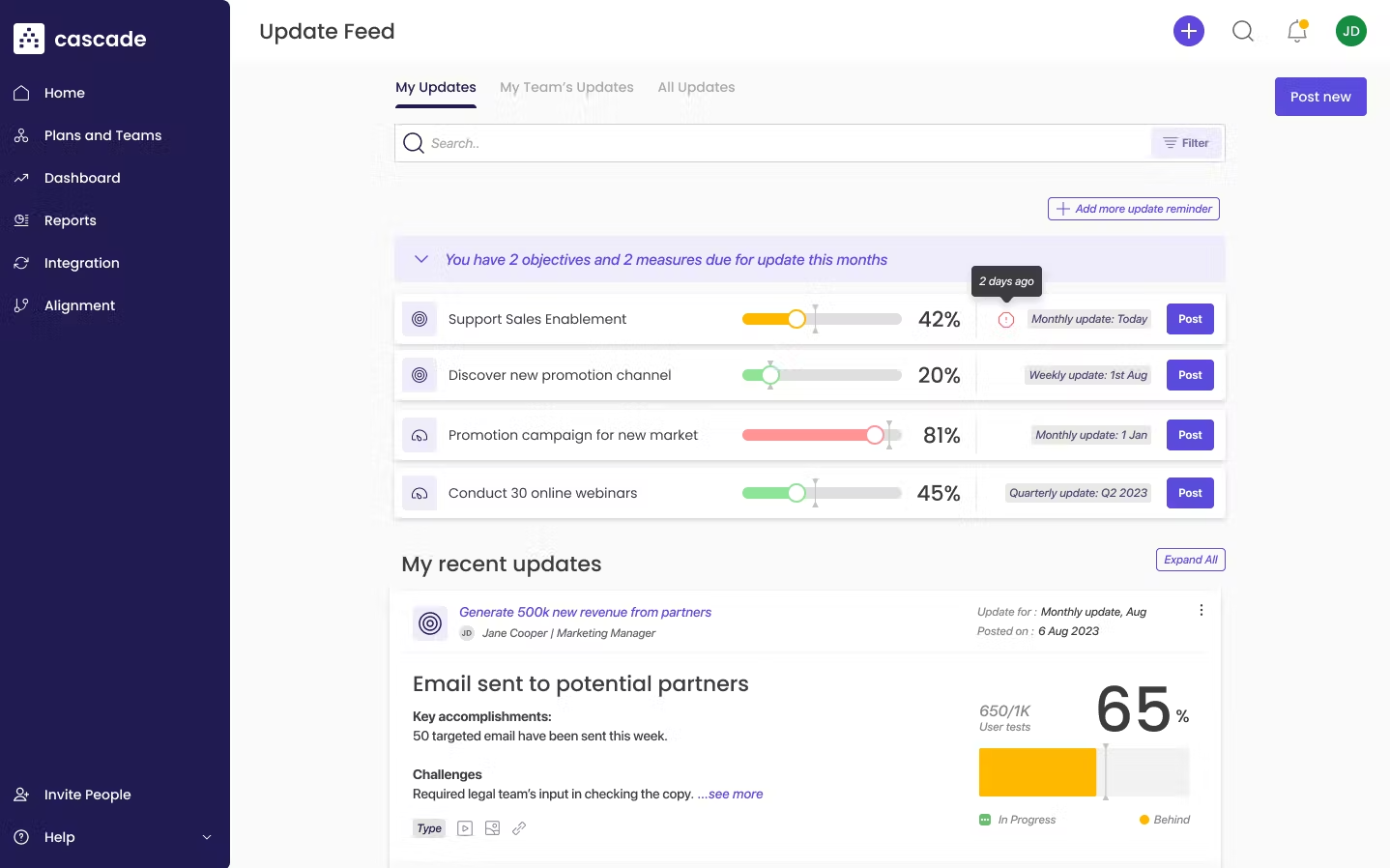
Cascade is a strategy execution platform that helps organizations define, track, and execute long-term business objectives. It focuses on company-wide strategy alignment, making it a strong choice for businesses that require structured goal-setting and high-level strategic tracking.
With deep analytics, goal visualization, and reporting capabilities, Cascade is best suited for enterprises looking for granular control and a structured approach to long-term planning.
Cascade feature highlights
- Strategic Goal Planning: Define and align long-term business objectives.
- KPI & OKR Integration: Track both strategic goals and key performance indicators in one platform.
- Advanced Goal Visualization: Use dashboards and strategy maps to monitor goal alignment.
- Performance Analytics & Reporting: Generate high-level reports on company progress.
- Cascading Goal Framework: Ensure alignment from leadership down to individual contributors.
Cascade pros and cons
| ☺️ Pros | 😓 Cons |
|---|---|
|
|
Cascade pricing
Cascade offers custom pricing tailored to enterprise needs:
- No public pricing: Requires a consultation for a custom quote.
- Annual contracts: No month-to-month pricing available.
- Designed for enterprises: Best suited for mid-to-large businesses needing strategy execution tools.
How to choose the best Jira Align alternative
Choosing the best Jira Align alternative means finding a tool that balances ease of use with powerful features. If a platform is too complex, it may discourage adoption, while a tool that lacks essential features could limit your team's success. Consider these key factors:
- Learning Curve – Avoid tools with a steep learning curve that slow down adoption.
- Ease of Use – The platform should be intuitive and minimize friction in daily workflows.
- Features & Integrations – Look for tools that offer the functionality and integrations your team needs.
- Reporting Capability – Ensure the platform provides clear insights and goal-tracking metrics.
- Budget – Consider the cost relative to the value and scalability of the tool.
- Customer Support & Documentation – A responsive support team and comprehensive documentation can be crucial for troubleshooting and onboarding.
How to get started with Tability
After reviewing the top 6 alternatives to Jira Align, you should have a clear idea of which tool is the best fit for your needs.
If Tability feels like the right fit, you can sign up for a free trial or get a personal tour of the platform.
You will be able to try out Tability for free for 14 days and import your existing data within seconds.